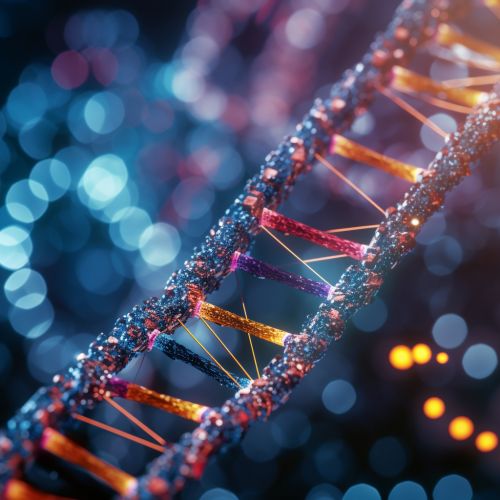DNA to RNA Transcription
Introduction
DNA to RNA transcription is a fundamental process in the life of cells, where the genetic information stored in DNA is copied into RNA. This process is performed by an enzyme known as RNA Polymerase which synthesizes RNA from DNA. The resulting RNA molecule can then be used to produce proteins, a process known as protein synthesis.


DNA Structure and Function
DNA, or deoxyribonucleic acid, is a molecule that carries the genetic instructions used in the growth, development, functioning and reproduction of all known living organisms and many viruses. DNA is made up of two long chains of nucleotides, which are each composed of a sugar, a phosphate group, and a nitrogenous base. The four types of nitrogenous bases in DNA are adenine (A), thymine (T), guanine (G), and cytosine (C). The order of these bases is what determines DNA's instructions, or genetic code.
RNA Structure and Function
RNA, or ribonucleic acid, is a molecule similar to DNA. Unlike DNA, RNA is usually single-stranded and contains the sugar ribose and the nitrogenous base uracil instead of thymine. RNA plays a central role in protein synthesis where it acts as a messenger between DNA and the ribosome, ensuring the correct sequence of amino acids in the resulting protein.
Transcription Process
The process of transcription can be divided into three stages: initiation, elongation, and termination.
Initiation
The initiation phase of transcription begins when the RNA polymerase binds to the promoter region of the DNA molecule. The promoter is a sequence of DNA that signals the start of the gene. Once the RNA polymerase is bound to the promoter, it separates the DNA strands to create a transcription bubble.
Elongation
During the elongation phase, the RNA polymerase moves along the DNA template strand, synthesizing a complementary RNA molecule. The RNA polymerase adds nucleotides to the 3' end of the growing RNA molecule, in the direction of 5' to 3'.
Termination
The termination phase occurs when the RNA polymerase reaches a sequence of DNA called the terminator. Once the RNA polymerase reaches this sequence, it releases both the DNA template and the newly synthesized RNA molecule, effectively ending the transcription process.
Post-Transcriptional Modifications
In eukaryotes, the primary transcript, or pre-mRNA, must undergo several modifications before it becomes a mature mRNA molecule. These modifications include the addition of a 5' cap, polyadenylation at the 3' end, and splicing to remove introns.
Role in Protein Synthesis
The RNA molecule produced by transcription serves as a template for protein synthesis, a process known as translation. During translation, the sequence of nucleotides in the mRNA molecule is read by the ribosome to produce a chain of amino acids, forming a protein.
